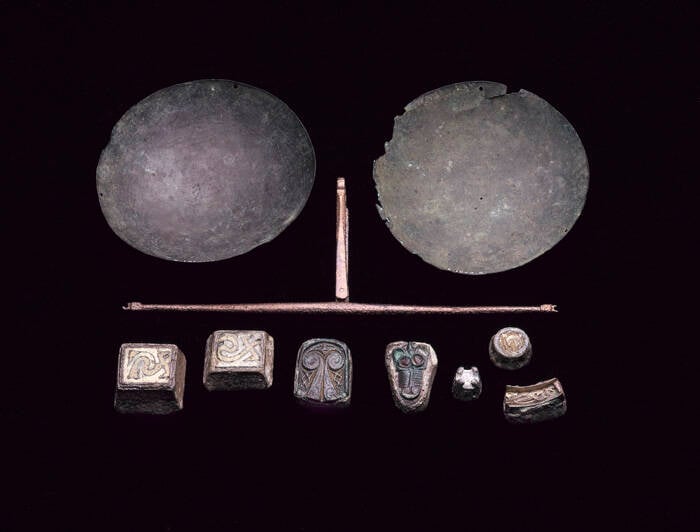Gustav Bruunsgaard was searching a field in Elsted, Denmark, with a metal detector when he made this “spectacular” discovery that dates back to 800 C.E.

Moesgaard MuseumExperts believe the seven silver arm rings date back at least 1,200 years.
A22-year-old archaeology student from Aarhus University in Denmark was recently searching a field near the school with a metal detector when he made a shocking discovery: seven silver arm rings that date back to the Viking Age.
Between 763 and 1066 C.E., the region was a hotbed for trade among the Vikings, leaving behind a wealth of artifacts for future historians. Researchers at the Moesgaard Museum in Aarhus estimate that these arm rings were crafted around 800 C.E. — and they’re revealing fascinating information about the spread of ideas at the time.
A Danish Archaeology Student Unearths Viking Arm Rings
Earlier this year, an archaeology student at Aarhus University was using his metal detector to search a field in Elsted, Denmark, when the device alerted on something beneath the soil.
Buried in the dirt, 22-year-old Gustav Bruunsgaard uncovered a silver arm ring. Knowing that the site was a historical Viking settlement, Bruunsgaard went back a few days later with the hopes of discovering additional artifacts. With some luck, Bruunsgaard unearthed six more arm rings in the field.

Gardar Rurak/Wikimedia CommonsThe Moesgaard Museum in Aarhus, Denmark, where the silver arm rings are now on display.
Bruunsgaard notified local authorities about the finds, and the arm rings were transferred to the nearby Moesgaard Museum for examination. This museum is best known for housing the Grauballe Man, the exceptionally well-preserved 2,300-year-old mummy who made headlines when he was first discovered in 1952. There, officials authenticated the silver arm rings and estimated that they date back to 800 C.E., during the early Viking Age.
Researchers believe that the artifacts were produced in southern Scandinavia — likely in Denmark — but the origins of their designs vary. One of the arm rings, which features tight coils, was popular in Russia and Ukraine before the style spread to Nordic countries. Three of them were common in Denmark at the time, while the remaining three are “rare” and have no ornamentation, a design seen in England and Scandinavia.
So, what can these rings tell us about Viking society around 800 C.E.?
The Importance Of Silver In Viking Society
During the Viking Age, silver was used as a type of money. According to a press release by the Moesgaard Museum, “Bracelets like these were adapted to a common weight system, so that the value of the individual rings could easily be seen. It served as a means of payment and transaction, as well as demonstrating the owner’s financial ability.”

National Museums ScotlandScales and weights used to measure silver during the Viking Age.
In total, the arm rings found by Bruunsgaard weigh roughly a pound, and they would have served both as currency and as a status symbol for the wearer.
Because the designs of the rings come from such a variety of places, this discovery confirms just how widespread travel and trade were in the region by 800 C.E.
As Kasper H. Andersen, a historian at the Moesgaard Museum, stated in the press release: “The Elsted farm treasure is a fantastically interesting find from the Viking Age, which connects Aarhus with Russia and Ukraine in the east and the British Isles in the west. In this way, the find emphasizes how Aarhus was a central hub in the Viking world.”